Tag: language and culture
https://youtu.be/UIoCJiKWKy0
Jacob McKay created this digital story in the Drake University J-term class SCS 153: Documentary Video Challenge: Digital Storytelling for Social Justice.
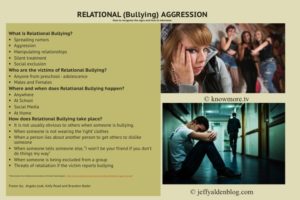 Kelly Read, Angela Leak, Brandon Bader
Kelly Read, Angela Leak, Brandon Bader
Relational Bullying is the opposite of physical bullying, yet just as damaging to self-esteem if not more so. The wounds from physical bullying may fade after time but wounds from relational bullying can last for years if not a lifetime. Some examples of relational bullying are peer pressure, gossip, social exclusion and feigning friendship to gain trust of the victim. According to a study by the University of Illinois by Rodkin et al, bullies have been known to either have high self-esteem, or worse, be former victims of bullying themselves (2015). Some of these perpetrators have been marginalized socially themselves, suffer from low self-esteem, and use bullying as a way to take their anguish out on someone else. Additionally, although some bullies come from good homes, just as many come from dysfunctional homes with abusive parents.
With the popularity of the internet, the amount of relational bullying has exploded. Victims are no longer able to escape their bullies by leaving the school and going home, instead the abuse continues at home online. Especially with the widespread use of smartphones now, at times it is inescapable. The abuse has intensified online as well. Perpetrators create Facebook pages for example, inviting peers to trade information about the victim and post pictures, all without permission. This particular method has resulted in countless suicides. Just recently, there was an article on npr.org about the announcement that for girls aged 15-19 suicide is now the #1 cause of death(2015). Although this statistic may not be entirely due to bullying, it is without a doubt it is a large factor.
There are many psychological temperaments that a bully may have. Some of these are: Anger, Depression, and Anxiety. Anger management should be part of teaching children in the no bullying area. Teaching children at a young age, on through adolescence on how to control their anger and even direct it in a more productive way. Anger and aggression are main components of bullying. Depression is common on victims of bullies and in bullies themselves. This area is important because depression leads to suicides, especially in middle-school aged children. Victims of bullies often have depression, therefore these children are the most at-risk. Anxiety is also a component of bullies and of bullied victims. Anxiety can cause students to miss school thus heightening anxiety for having to return and having to face peers and teachers and homework.
The feminist social justice approach is to treat the bullies and the victims the same. Meaning, teach each child the same for the symptoms and psychological aspects as listed above.
We should all be treated the same. The laws in this country allow all children to have a free education and therefore we all have to live together. Approaching the problem of bullying
From a psychological aspect should alleviate the bullying problems we are currently facing.
Preschoolers through adolescence have been bullies. Preschoolers do not have the verbal and cognitive skills to hide it as well as the older children, therefore it is easier to recognize.
As children age, they gain skills in which they could covertly bully other students. Being a victim of a bully also causes children to be rejected by their peers. Not only are they being victimized by the bully, but then rejected by others because they cannot defend themselves, nor will anyone assist the victim. Boys and girls are both equally bullies and victims.
Educators are more focused on physical bullying than relational bullying. Relational bullying is hard to recognize because it can be verbal, silent, on social media, through notes, whatever way the bully can get to the victim. It can be subtle, for example, “You can’t sit with us at lunch today.” or “You can’t be friends with us today.” The child would be alienated from their ‘normal’ group of friends. There is no evidence of this behavior and of course the bully will not admit it. Educators would not easily recognize this unless it is self-reported. By being aware of their students and care monitoring of these students, being able to identify bullies and victims would become more prevalent. Adults, though, typically ignore this type of bullying and disregard it as, oh, boys will be boys, or those girls always stay together.
To combat this, educators need to be aware of the subtle signs of relational bullying and not rely on the victim to speak out. Schools might even need to look into support staffs that are IT savvy who will take on the responsibility of monitoring social networking for signs of trouble. Schools could also have anonymous ways of reporting harassment for those who want to report instances of relational bullying. As bullying has evolved, methods to combat them need to evolve as well. Educators as well as administrators and staff need to think outside the box so to speak. Obviously we will never be able to eradicate peer to peer relational bullying completely, but we can at least try.
Works Cited
http://www.cdc.gov/violenceprevention/pub/youth_suicide.html
http://www.stopbullying.gov/what-is-bullying/definition/index.html
http://nobullying.com/relational-bullying/
http://www.npr.org/sections/goatsandsoda/2015/06/02/409731413/suicide-no-1-cause-of-death-for-older-teen-girls
Rodkin, P. C., Espelage, D. L., & Hanish, L. D. (2015). A relational framework for understanding bullying: Developmental antecedents and outcomes. American Psychologist, 70(4), 311-321. doi:10.1037/a0038658
Lea Kozulic, Susan Smith, Emily Tyler
We learned that the empathy is the capacity to understand what another person is experiencing from within the that person’s frame of reference. In the movie Bully, noone really felt or experienced empathy with Alex besides his parents who went to see the principal who were devastated and desperate because they knew what their son was going through and they couldn’t have helped him on their own. Principal on the other hand, didn’t really show signs of empathy with the parents because she said she would help them in fall and she did not. Finally, she intervened and asked her assistant to work on the case but it didn’t end up being very effective because children kept teasing him and the boy ended up being scared even more. Same thing with the girl named Kelly who was a lesbian. In the end of the movie, she said that “maybe there’s other place she could go and make a difference”. But, not here.
Obviously, forcing the children to the things they don’t really want to do, won’t make them stop teasing other kids because they can’t think rationally – or ’empathically’ – at their age. Their emotional intelligence isn’t developed enough for them to percieve what is right or what is wrong. It’s all about how their idols or role models influence them. This is where the role of parents comes up. Parents are children’s role models at young age. They copy their moves and want to be like them. Throughout the readings and the book The Bluest Eye, we could learn and a lot and expand our views about the power of role models. There was a big difference in the attitude of Pecola and Claudia towards themselves and the fact they were black. It all depended a lot about their role models. Pecola didn’t have good role models because here parents were a mess themselves and didn’t appreciate their own lives. They accepted the life a misery which was something that started in their own heads at their very young age. On the other hand, Claudia was lucky enough to have a somehow stable family where people loved and supported each other.
This is why it’s important to give a good example of being a good and strong person to kids at the very young age. It’s important to teach them mannerism and good values. It’s important to teach them to respect other people and the differences between us. It is important to teach them that we are all equal but different as well. That is the art of nurturing. This is where empathy really is important. It is easy to identify with people who have very similar habits as you do, but how are you going to teach your kids to respect people who are different, but at the same time the same as you are? It all starts at young age and this is where parents teach their kids how to respect kids and identify themselves with others. One of the good ways would be to ask their kids how would they feel if they were bullied? How would they feel if they would have been in the bullied kid’s skin? Probably not very good. This is why we created a poster that would remind the children that it is their choice whether they are going to be bullies and to make it look bad. It is also important to treat those kids as young adults because that’s how they want to be treated so it reminds them that everyone has issues of their own that we need to respect.
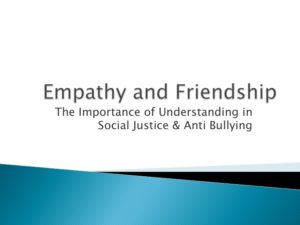
Students in Patton-Imani’s Introduction to Women’s Studies were sent on an intellectual scavenger hunt in which they had to explore, analyze, synthesize, and apply connections between knowledge, power, media images and narratives, and individual lives. Drawing on class discussions about Toni Morrison’s The Bluest Eye, each group was asked to critically consider what we can learn about contemporary society from this narrative, focusing on one of the following: romantic love, beauty, masculinity, femininity. The blog posts below share some of their work. Please leave comments!
When you hear the jingle, you hear the music in your head, but do you realize what you are actually watching? Every couple that Kay advertises is a same-race couple but it’s never an interracial couple. If you dig a little deeper, you can see that they play certain races’ commercials in certain areas more than others according to advertisingdirected.com. Also, does it ever strike you that they play out this “romantic love” concept by the simplicity of a kiss between a two people? It is so played out that if you end up with a couple of the same race as you and you buy them this ring, then it will automatically work out! I personally feel that there are a lot more trials you must face in order to be a happy couple that they so easily display in their commercials. I also believe that the couples that they choose are very stereotypical, in that they are always dressed the part of a middle-to-upper-middle class lifestyle; and then when you look at it from a socioeconomic standpoint the advertisers take out more than half of the American population. I think that what Kay Jewelers and so many other advertising campaigns do well is show the cookie cutter couple. When you have the cookie cutter couple, you take out interracial couples, poor couples, same sex couples and so much more. Although it is so easy to remember their little jingle, you have to ask yourself what end goal do they have in mind?
The Kay Jeweler’s advertisements our group found remind me of the White Privilege article by Peggy McIntosh. Towards the end of the article, she writes about heterosexual privilege. From all of the advertisements that our group found, none of them featured a homosexual couple. They all featured the stereotypical heterosexual couple. This creates a very biased view about romantic love and what it’s supposed to be. Advertisements are seen by millions of people, so only showing heterosexual couples establishes that as the norm. Everything else will be seen as abnormal. These advertisements can be particularly damaging to children who are still developing their own view of society. If we are trying to build toward a more accepting and diverse society, only showing heterosexual couples on these advertisements is doing everyone a disservice. Ending heterosexual privilege isn’t going to be an easy process, but by diversifying the types of couples featured in advertisements will help. If children begin seeing advertisements featuring homosexual couples, hopefully they will no longer see that as abnormal.
The images we see, the images built up and perpetuated by the media, help shape our perception of the world. These images can often work to disempower the lowest of the social strata, and can often have unintended consequences. Pauline, in The Bluest Eye, lapped up the fancy and happy world portrayed in movies. However, it worked to worsen her perception of her own life. Because she could not be “pretty” like Jean Harlow, who she imitated, and her family and marriage could not be the happy, relatively carefree life she admired, she gave up. She found it impossible to identify the beauty and positives in her life. Similarly, those who find themselves excluded in the media, or portrayed negatively, find it hard to accept themselves and their lives. Because mixed race or same sex couples are absent or often stigmatized, it promotes a lack of acceptance in society. Life becomes increasingly difficult for those breaking from “the norm.” More diverse and accepting images could help eliminate the narrow image of the “proper” and “normal” to better reflect reality. This would likely help broaden acceptance and alleviate some of the problems of self-hate plaguing society in this day and age.
I think it’s important that we look at this ad in a different way. When thinking specifically about wedding rings and the Kay commercials it is easy to forget that there are many forms of proposal across cultures and some cultures suggest that it’s a better idea to wait to kiss until after they’ve said their “I do’s” at the altar, or jump over the broom, or whatever other cultural norm they partake in at their wedding. In the piece “It’s Not an Oxymoron: The Search for an Arab Feminism” by Susan Muaddi Darraj, she makes a point of talking about the Arab rituals her and her husband went through in order to pay homage to the traditions her family practiced culturally. I think it’s important to remember that not all families, cultures, religions, sexualities will want to have a traditional Christian wedding that we’ve come to be so accustomed to in America. Even though I think it’s easy for Kay Jewelers to get their point across I think it’s important that as a jewelry company that they pay attention to the range in their demographic and how they will connect to their commercials. What kind of messages are they sending across cultures? Maybe not a good one.
Chelsea, Codie, Darshan, and Alex, Intro to Women’s Studies
Prude vs. Slut
It seems that these two words would be considered on the opposite ends of a certain spectrum; however, society does not allow it to be this way. Society makes us feel like there is no in between. A woman can be either a slut, or a prude. But who defines these words? Societal views are mostly created from the views of men. Unfortunately, in regards to the words slut and prude, women tend to have a strong opinion as well. It is not just guys’ opinions of girls; it is girls’ opinions of other girls. As twenty-year-olds in the generation, it is not uncommon to hear girls commenting on the actions of other girls. “She won’t put out, that’s why he is going to leave her.” “Oh my gosh, she is so slutty. She has had sex with every guy on the football team.” The sad thing about these circumstances is that there is no happy medium. According to society, you are either a slut or a prude. Both are looked upon as derogatory terms.
Definition of prude according to Webster’s Dictionary – a person who is or claims to be easily shocked by matters relating to sex or nudity
Definition of prude according to Urban Dictionary – One who will not engage in any kind of sexual activity with a member of the opposite sex, usually used as a discriminatory word, can be used in a fashion as to bait someone into sexual activity.
Definition of slut according to Webster’s Dictionary – a promiscuous woman, prostitute, a saucy girl
Definition of slut according to Urban Dictionary – a woman with the morals of a man, “Someone who provides a very needed service for the community and sleeps with everyone, even the guy that has no shot at getting laid and everyone knows it. She will give him sympathy sex either because someone asked her to or she just has to have sex with everyone she knows. These are great people, and without them sex crimes would definitely increase. Thank you slut, wherever you are.”
How do men respond to these words? When hearing the word prude, some men will either stay far away or decide the girl isn’t worth the fight. Others will see it as a challenge. Some may even make bets to see if they can get a girl to hook up with them. When hearing the word slut, a guy sees an easy target. A definite cause. If the girl is intoxicated, she will definitely go home with the guy.
We have asked some men to tell us what they think “slut” and “prude” are and we got a few responses back:
“A slut is someone who can f*** the whole world and a prude is someone who won’t give it up”
“ A slut is a person, male or female, that starts into relationship with the intent of sexual action, sometimes with multiple people, has no intent of commitment but plays the part until becoming bored and leaving to the next, usually destroying not only their life but many others during the process”
“ Slut, just in it for the sex and with many partners”
“Prude = Boring”
“A prude is someone who puts themself above others, makes a point of others knowing it and has no sense of standard humor, everything around them wreaks of negativity and they don’t typically have many friends due to their attitude”
“A prude would be extremely uncomfortable with sexual contact, rather opposite of a slut, a prude would nearly seem gay but isn’t”
“Slut is a girl that will continually sleep with one or many men with no need or want of a relationship not caring who or what she’s with…prude is a women that will not give up even if the time is right and everything is going well but let’s not mistake prude for class cuz there all in a very fine line slut class prude”
When asked if there is an in-between or simply a girl is a prude or slut responses were:
“Those are the hard to find girls (neither slut nor prude) most guys look for, they are considered “normal” but since, in some locations they can be quite hard to find, one usually has to settle for less. Normal people are much like old muscle cars. Fewer and fewer every day, as such, the value goes up”
“Yea like I said ur a slut or prude”
When asked if men can also be sluts responses were:
“We call them studs”
“Everyone just assumes slut to be the girl but a lot of dudes are too”
“They call us playas”
There are accepted societal norms when it comes to the attire of a woman. For a professional interview, a short jean skirt is probably not ideal. For a beach party, a long black pencil might get dirty and hot. The same woman may own both of these skirts. Does this mean when wearing the black pencil skirt she is a professional businesswoman who is prude and when wearing the jean skirt she wants sex and is a slut? A girl’s attire does not determine who she is. It definitely does not beg for anything.
How does femininity impact this?
A woman should be able to wear what she wants without fear of being labeled. The term “asking for it “should never be applied to a woman just because of how short her attire is. If a woman wants to wear dresses, skirts, heels, she should not have to stand in front of the mirror and ask herself if she is going to be thought of as a “slut”, or worry about men thinking she is “easy”.
1 supporting course reading
Oppression by Marilyn Frye
This article has a passage in it that goes along very well with our topic of prude vs. slut. In the article it states:
“It is common in the United states that women, especially younger women, are in a bind where neither sexual activity nor sexual inactivity is all right. If she is heterosexually active, a woman is open to censure and punishment for being loose, unprincipled or a whore. The “punishment” comes in the form of criticism, snide and embarrassing remarks, being treated as an easy lay by men, scorn from her more restrained female friends. She may have to lie to hide her behavior from her parents. She must juggle the risks of unwanted pregnancy and dangerous contraceptives. On the other hand, if she refrains from heterosexual activity, she is fairly constantly harassed by men who try to persuade her into it and pressure her into it and pressure her to “relax” and “let her hair down”; she is threatened with labels like “frigid,” “uptight,” “man-hater,” “bitch,” and “cocktease.” The same parents who would be disapproving of her sexual activity may be worried by her inactivity because it suggests she is not or will not be popular, or is not sexually normal. She may be charged with lesbianism. If a woman is raped, then if she has been heterosexually active she is subject to the presumption that she liked it (since her activity is presumed to show that she likes sex), and if she has not been heterosexually active, she is subject to the presumption that she liked it (since she is supposedly “repressed and frustrated”). Both heterosexual activity and heterosexual nonactivity are likely to be taken as proof that you wanted to be raped, and hence, of course, weren’t really raped at all. You can’t win. You are caught in a bind, caught between systematically related pressures.”
I totally agree with this passage and believe the author got it spot on. There is constantly pressure for a woman when it comes to sex.
2nd supporting course reading
The Bluest Eye by Toni Morrison
“Everybody in the world was in a position to give them orders. White women said, “Do this.” White children said, “Give me that.” White men said, “Come here.” Black men said, “Lay down.” The only people they need not take orders from were black children and each other. But they took all of that and re-created it in their own image. They ran the houses of white people, and knew it. When white men beat their men, they cleaned up the blood and went home to receive abuse from the victim. They beat their children with one hand and stole from them with the other. The hands that felled trees also cut umbilical cords; the hands that wrung the necks of chickens and butchered hogs also nudged African violets into bloom; the arms that loaded sheaves, bales, and sacks rocked babies into sleep. They patted biscuits into flaky ovals of innocence- and shrouded the dead. They plowed all day and came home to nestle like plums under the limbs of their men. The legs that straddled a mule’s back were the same ones that straddled their men’s hips. And the difference was all the difference there was (Morrison 138).”
This passage relates to femininity, sex, and race. It really shows how women, particularly black women, were treated the worst. They were at the hands of their white masters wants and orders, and then came home to also get the abuse from their husband. White men had the power, although it is not as bad as it was, this unfair advantage still exists today.
Femininity – Sarah Sitzmann, Alexandra Kahtava, Victoria Grissom, Sarah Kehm
What would our world be like if “normal” were defined differently? What would it be like if the things we valued the most weren’t things, but relationships and experiences?
I created this video at a Digital Storytelling Workshop for K-12 Educators at the Center for Digital Storytelling, Berkeley, California, June 2013, through a grant from the Olson Fund for Global Service Learning.
This semester students in FYS 15: Diversity in the U.S. will create digital stories collaboratively with 4th graders at Walnut Street International Baccalaureate Elementary School. Stay tuned for our project updates.
Students in my Introduction to Women’s Studies course will make digital stories in conjunction with their service learning projects at various local organizations.
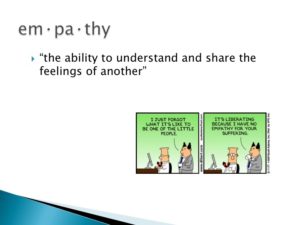
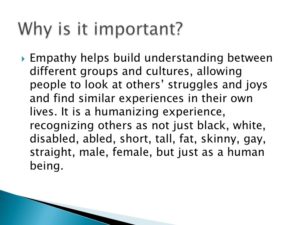
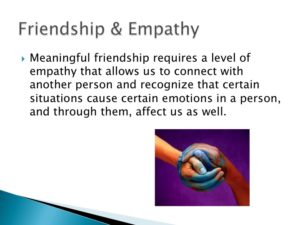
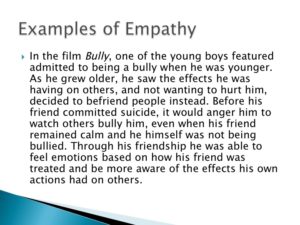

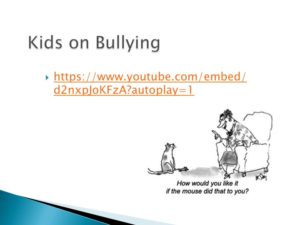
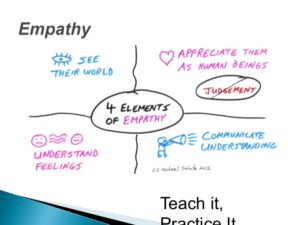
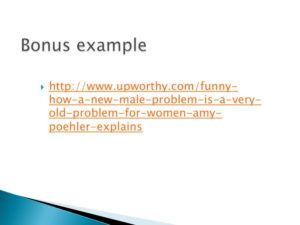



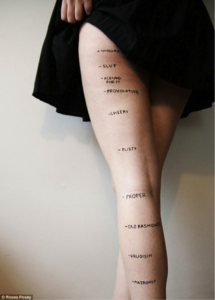
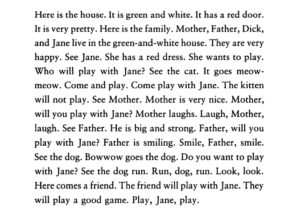

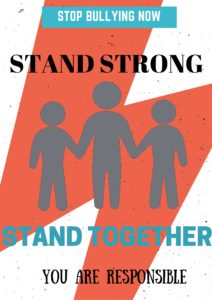
Recent Comments